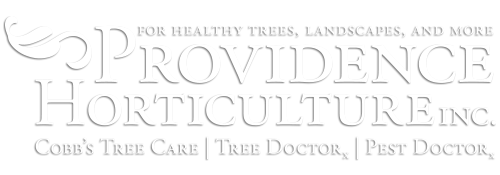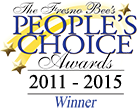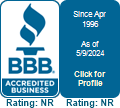Bark Beetle
What are Bark Beetles?
There are approximately 200 species of bark beetles in California, with 20 of them being invasive species. In the Sierra Nevada Mountains of California, the most invasive species is the Western Bark Beetle. Bark beetles mine the inner bark on twigs, branches, or trunks of trees.‚ (Seybold) Pine trees are typically attacked by these beetles when the trees are stressed, due to drought, disease, or injuries. The damage the beetle causes within the tree may eventually cause the tree to die.
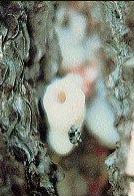
Figure A
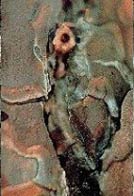
Figure B
What are the symptoms?
When examining your Pine tree you will notice small pitch tubes 1/2 to 3/4 inch in diameter around the trunk of the tree. If you notice a few white pitch tubs scattered around on the tree, this means that the attacks were unsuccessful (See figure A). If the pitch tubes are white to red-brown (See figure B), this indicates that there have been successful attacks on your tree. Once the tree is attacked, the beetles will chew through the bark, and dislodge fungus within the vessels of the inner bark and sapwood. When the vessels become blocked, this is when the foliage on the tree will begin to change colors from pale green to yellow, and eventually red-brown. (See picture below)
Treatment Options:
- Systemic Soil Treatment
In the spring, summer and fall, if your trees are irrigated or expected to receive the necessary rainfall, we can perform a systemic insecticide treatment. This treatment will treat your trees for approximately 1 year to help control the bark beetle insect. We highly recommend treating your trees with the Arborjet tree injection in addition to the systemic insecticide treatment. Contact us for more information. - Pheromone Treatment
Tree DoctoRx can help prevent your trees from getting Bark Beetle with a new product called Specialized Pheromone & Lure Application Technology. This product is an environmentally friendly product that repels the bark beetle insect. It releases a verbenone anti-aggregation pheromone that tells the beetles that the tree is overcrowded and is not a suitable host. This product must be re-applied every 6 to 12 months. We highly recommend treating your trees with the Arborjet tree injection in addition to the pheromone treatment. Contact us for more information. - Tree Injection
Tree DoctoRx can do an Arborjet trunk injection on your tree to help control the Bark Beetle insect, for approximately 2 years.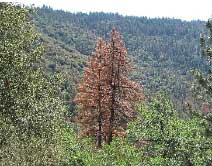 Once the trunk injection takes place the product will travel throughout the tree’s vascular system and kill the bark beetles inside of it. The best time of the year to inject your trees with this method are in the spring and fall. Due to the excessive heat, we are not able to do tree injections in the summer because the product will not move adequately through the tree. Contact us for more information or to learn more about Arborjet click here.
Once the trunk injection takes place the product will travel throughout the tree’s vascular system and kill the bark beetles inside of it. The best time of the year to inject your trees with this method are in the spring and fall. Due to the excessive heat, we are not able to do tree injections in the summer because the product will not move adequately through the tree. Contact us for more information or to learn more about Arborjet click here.
For more information on Bark Beetles, go to the following link:
http://www.ipm.ucdavis.edu/PMG/PESTNOTES/pn7421.html or
http://www.fs.usda.gov/Internet/FSE_DOCUMENTS/stelprdb5384837.pdf


